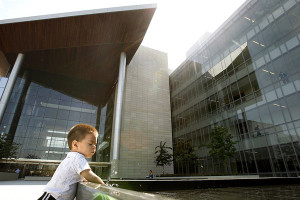The first task? Dealing with 1,200 cases that have been filed but shelved because there was no court. Read the Record’s report here.
San Joaquin Small Claims Court Re-Opens
Caseload Report Out, Will Have Budget Implications
Courts Monitor Publisher Participates In New Film
Long Beach Courts Move To New Public-Private Built Building
Check out the story here.
ADA Case Tackles Major Access Liability Issue
California Courts Monitor ‘Special Report’ Update now on stands and available for download
When we published our printed “Special Report” earlier this year, it detailed a court crisis facing a difficult season. Sometimes, it seemed that the looming cuts, coming after years of cuts, were mostly positioning for the ongoing state budget battle. In addition to our daily online offerings, we promised to update the print report at the end of summer, so that’s what we did, and it is now available in local coffee shops and newsstands or you can download it by clicking here.
The takeaway? It was as bad, and sometimes worse, than expected. An environment of fear and insecurity only became more so. And we marveled at the number of people who would talk about courts issues, but only on condition we never name them. Think of that. These are people who are mostly afraid that judges — judges! — will actually punish them for voicing opposition. And some of those fearing retribution are lawyers.
In this Update, we have included more new material than we intended and highlighted one of our judicial profiles in a blatant attempt to show relevancy to a new audience — the national civil courts community. You can access the original here on our website or contact us directly at scw@californiacourtsmonitor.
And let us also say Thank You for the warm reception and backroom briefings prompted by our coverage. Our pledge is to get better and that our mistakes will be those of the head, not the heart.
Already? For 2014 Courts Face A Zinger
Court: Landlords Have Right To Weekend Access
Not everyone will agree with that “normal business hours” decision, and a law professor from San Diego blogged about how much power it could give a less-than-perfect landlord. Shaun Martin wrote: “Imagine that you have a tenant you don’t like. She’s got rent control. She’s got kids. She requires you to actually do repairs. Whatever. She’s a huge pest. Here’s an easy solution for you: Put the place up for sale. Set the price at 20% or so above market. If you get a sale, great. Huge profit. That almost certainly will not happen. But like you care. You hold open house after open house. Two weekends a month. Like here. If it takes a year, so be it. No skin off your back. Not like you’ve got to do anything. You’re not even there.”
Read details of the case in the Met-News here.
And see Prof. Martin’s blog here.
